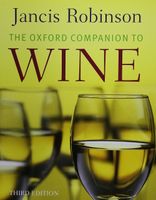Advertisement
Stages of ageing
Published 2006
Maturing fine wines go through a number of perceptibly different stages. Very young wines are usually delicious, full of fruit and vivacity, but slightly simple. At some (unpredictable) time after bottling, anything between a few months and a few years, many fine wines seem to close up, to become surly, to lose their aroma without having gained a bouquet. Their dimensions can be sensed but little else (see tasting). A variable number of years afterwards, they begin to smell like wine again and to have considerably more palate length. After this they enter into their most satisfying stage at which the bouquet seems fully developed and astringency has receded, making the mouthfeel attractive, so that the wine is delightful in terms of flavour, texture, length, and all-important balance. (Many serious white Rhône wines are particularly prone to this sort of mid-life crisis.) If, however, wine is aged for too long (and no one, alas, can predict when this will be), it enters a stage of decrepitude during which the acidity starts to dominate (see above). This unpredictable journey may help to explain apparently contradictory judgements of the same wine, from wine writers, wine professionals, and wine consumers alike.


